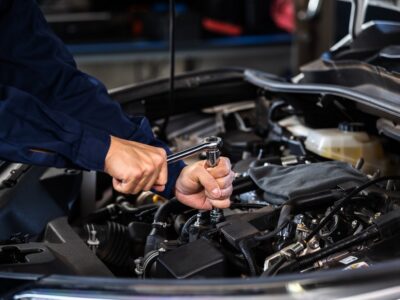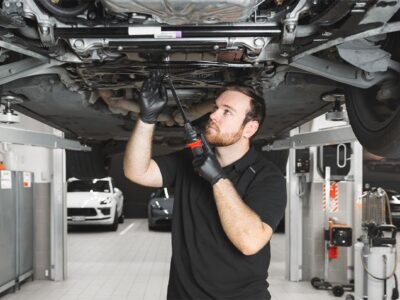In today’s automotive industry, the demand for lightweight, fuel-efficient vehicles has become a key focus. Lighter cars offer better fuel economy, lower emissions, and enhanced performance. To achieve these goals, manufacturers increasingly rely on metal welding to join advanced materials, enabling the production of strong, lightweight structures.
This article explores why metal welding is essential for the creation of lightweight automotive designs and the role it plays in supporting modern manufacturing processes.
The Transition to Lightweight Designs
Vehicle weight reduction is one of the best methods to meet industry pressure to comply with increasingly stringent environmental rules that aim to improve fuel efficiency and reduce emissions. Lighter vehicles not only consume less fuel but also improve performance, particularly in electric vehicles (EVs) where maximizing battery range is critical.
However, this shift to lightweight designs requires more than just new materials – it demands advanced custom welding services capable of joining lightweight metals such as aluminum, magnesium, and high-strength steel.
Metal welding is at the core of this transformation, providing the necessary strength and durability to ensure vehicle safety while minimizing weight. By using modern welding technologies, automakers can maintain the structural integrity of cars even as they shed pounds.

Metal Welding and Lightweight Materials
Traditional cars were largely made of steel, a strong but heavy material. Today, automakers are turning to alternatives like aluminum and high-strength steel, which offer comparable strength with significantly less weight.
Although these materials have many benefits, welding these materials can be difficult. Traditional welding techniques that work well with steel may not be as effective with these lightweight metals, as the heat involved can distort or weaken them.
Manufacturers are implementing cutting-edge metal welding techniques to address these issues. Here are some of the most important welding methods for lightweight automotive designs:
- Laser Welding: Laser welding is a highly precise method that uses concentrated laser beams to fuse metal parts together. It is particularly well-suited for lightweight materials like aluminum, as it produces minimal heat and distortion. This precision makes it ideal for joining thin metal sheets and complex shapes commonly used in modern automotive manufacturing.
- Friction Stir Welding (FSW): Another important technique for connecting lightweight metals is friction stir welding.Unlike traditional welding, which melts the metal to form a joint, FSW uses frictional heat to soften and bond materials without melting. This process creates a strong, reliable joint and is commonly used for joining aluminum parts in automotive body panels and other components. FSW is particularly advantageous for electric vehicles, where lightweight aluminum is used extensively.
- Resistance Spot Welding: This technique is frequently employed in the automobile industry, particularly when joining steel. It fuses metal sheets together at specified locations by applying pressure and heat produced by an electric current. In lightweight designs, resistance spot welding is often used to join high-strength steel parts to lighter materials like aluminum, creating a robust yet lightweight structure.
Structural Integrity and Safety
One of the biggest concerns when reducing vehicle weight is maintaining safety. Lightweight cars still need to meet the same safety standards as heavier vehicles, which means that the structural integrity of key components must remain intact. Metal welding plays a crucial role in ensuring that the joints between different parts of the car are strong enough to withstand crashes and other impacts.
Advanced welding methods like laser welding and friction stir welding allow manufacturers to join lightweight materials in ways that maintain or even enhance structural integrity. For example, the precise control of heat in laser welding ensures that materials like aluminum retain their strength, while friction stir welding creates joints that are often stronger than the original material.
This is especially important in areas like the car’s crumple zones, which are designed to absorb impact during a collision. In these regions, lightweight materials must be carefully welded to ensure they can protect passengers while keeping the overall vehicle weight low.
Performance and Efficiency
Beyond improving fuel efficiency and safety, lightweight automotive designs also offer enhanced performance. Lighter vehicles can accelerate faster, handle more responsively, and reduce wear and tear on components such as brakes and tires. This makes them particularly desirable for high-performance sports cars and electric vehicles (EVs), where lowering weight is crucial to maximizing speed and range.
Metal welding ensures that the lightweight materials used in these cars are assembled with the precision necessary to maximize performance. For example, welding techniques like resistance spot welding are used in high-performance cars to bond lightweight aluminum panels and steel components. This results in a vehicle that is not only lighter but also capable of delivering the kind of driving experience that performance-oriented consumers expect.
In electric vehicles, lightweight metal welding is critical for battery enclosures and other components that protect the battery while minimizing the vehicle’s overall weight. Lighter electric vehicles can travel longer distances on a single charge, making them more efficient and appealing to eco-conscious consumers.
Sustainable Manufacturing
In addition to the performance and efficiency benefits, metal welding contributes to more sustainable manufacturing processes. By enabling the use of lighter materials, metal welding helps reduce the environmental impact of vehicle production. Lighter cars require less raw material to produce and use less energy during operation, resulting in lower emissions over the vehicle’s lifecycle.
Moreover, many advanced welding techniques produce less waste than traditional methods, as they allow for more precise cutting and joining of materials. This minimizes scrap and reduces the overall environmental footprint of automotive manufacturing.








Comments